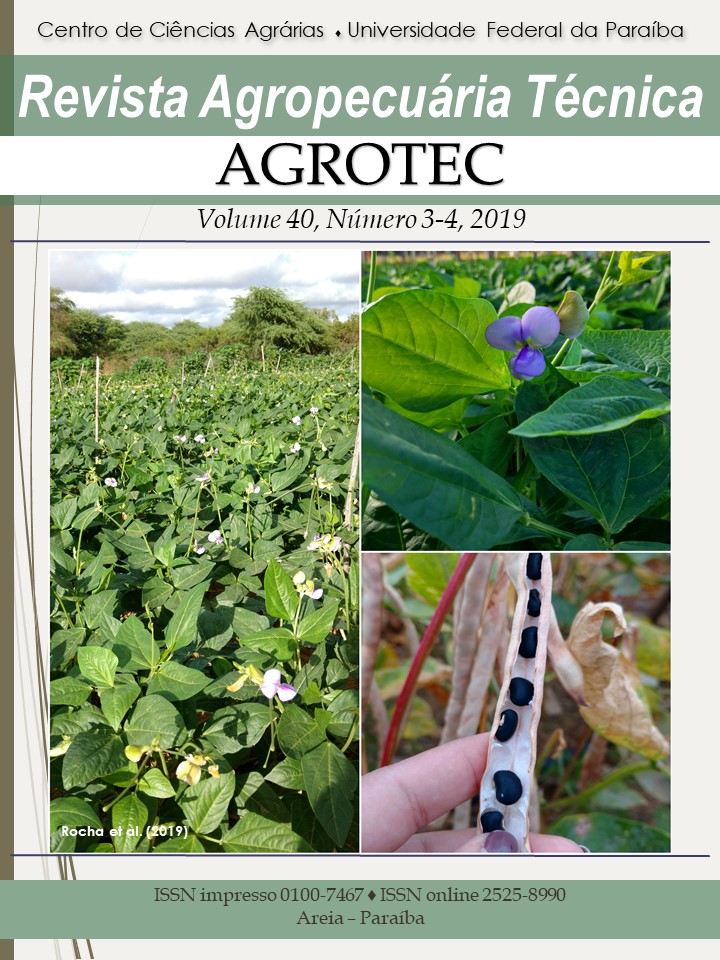Cowpea performance at plants densities in the North region of Bahia
DOI:
https://doi.org/10.25066/agrotec.v40i3-4.45554Keywords:
Vigna unguiculata, Plant spacings, Grain yieldAbstract
The plant density is one of the factors of production which contribute to optimum yield and grain quality, the objective of this study was to evaluate the response of cowpea to different plant densities in the north region of Bahia. The experiment was conducted from april to june at 2018, in the experimental area of the Department of Technology and Social Sciences of UNEB, Juazeiro, BA. A randomized block design was used in the subdivided plots scheme, the plots consisted of cowpea (BRS Acauã and BRS Tapaihum) and subplot, five spacing, resulting in five different planting densities: 66.66780.000; 100.000; 133.333 and 200.000 plants ha-1, ten replicates. The variables analyzed were: plant height, number of pods per plant, weight of 10 pods, pod length, weight of 100 grains and yield of grains. There was no significant effect of the interaction between grow crops and plants densities of cowpea in any of the analyzed variables. The density increase from 66.667 to 200.000 plants ha-1 resulted in an increase of 23% in the average height of the plants, a 64% reduction in the number of pods per plant and an increase of approximately 117% in the yield of grains. Density of 200,000 plants ha-1 is recommended for increases in cowpea grain yield in north of Bahia.


